Excerpts from Jim Conrad's
Naturalist Newsletter
from the August 18, 2013 Newsletter issued from the Frio Canyon Nature Education Center in the valley of the Dry Frio River in northern Uvalde County, southwestern Texas, on the southern border of the Edwards Plateau; elevation ~1750m (~5750 ft); N29.62°, W99.86°; USA
TIE VINE
If you were with me during the Yucatan years you remember the pleasure morning-glory vines gave us -- such an amazing diversity with so many colors, leaf shapes, sizes and habits. Here the wiry, arid-land Texas Bindweed grows on many fences, but really it's too dry for most Morning-Glory Family members. So, I was tickled this week to find a second morning-glory here, a pretty, purple-flowered one draped on a bush at the woods edge along the river, with leaves distinctively lobed at their bases, as shown below:
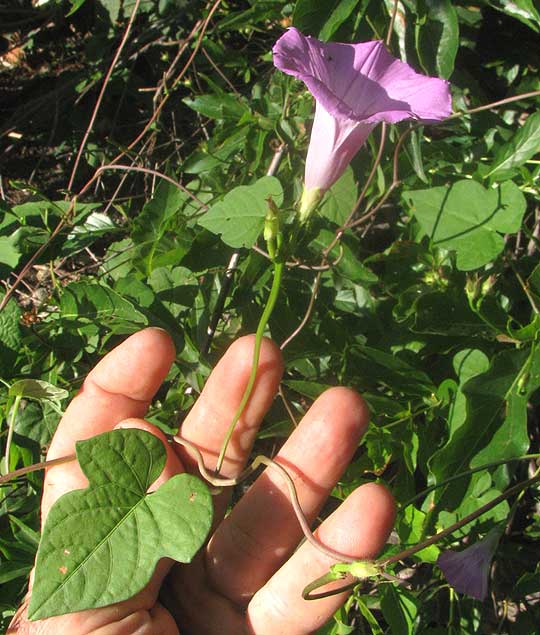
Peeping into the flower's throat you see a ± spherical stigma atop a slender style surrounded below by pollen-producing anthers held at different levels, shown below:
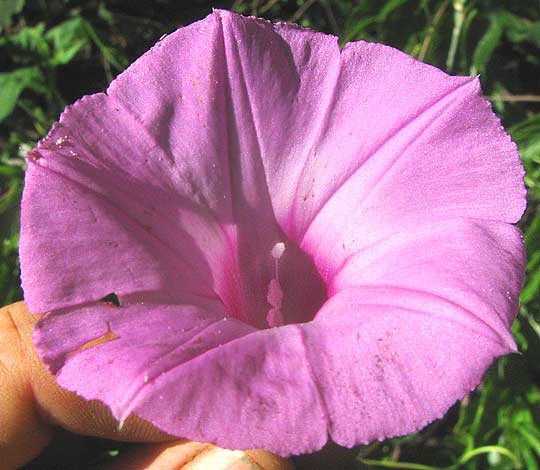
The roundish stigma points us toward the genus Ipomoea, a big genus, the most important species of which is the Sweet Potato. Embracing about 500 species, the many species of Ipomoea can be a challenge to distinguish.
In the Morning-Glory Family, the Convolvulaceae, often details of the calyx and its sepals are important to notice. Below, you can see that this species' calyx bears long, spreading hairs, and that the sharp sepals are nearly of the same length -- many species bear sepals of conspicuously different lengths:
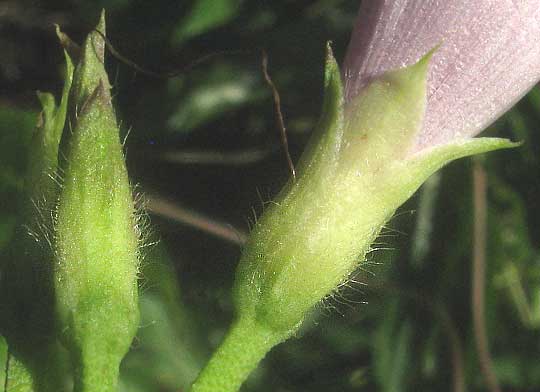
Our pretty vine is IPOMOEA CORDATOTRILOBA, often called Tie Vine or Purple Bindweed because it's a vine with stems tough enough to tie things together with.
Tie Vine occurs throughout much of the tropical and subtropical Americas, extending into the US into the southeastern Gulf Coast states and a little beyond.
from the September 7, 2014 Newsletter issued from the Frio Canyon Nature Education Center in the valley of the Dry Frio River in northern Uvalde County, southwestern Texas, on the southern border of the Edwards Plateau; elevation ~1750m (~5750 ft); N29.62°, W99.86°; USA
TIE VINE VARIETY #2
This week, in deep shade along the road in an Ashe Juniper stand ,a morning-glory turned up with what seemed to be the Tie Vine's flower, but instead of having three-lobed leaves like those shown above and a very long-hairy calyx, it produced heart-shaped leaves and its calyx was completely hairless. Below, you can see this week's find twining around a juniper branch:
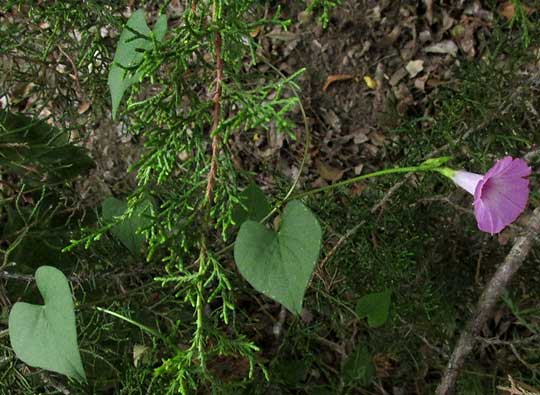
A peep into the pretty flower's mouth, which is dark, unlike the gardener's purple-flowered morning-glories with their corolla tubes white inside, is shown below:
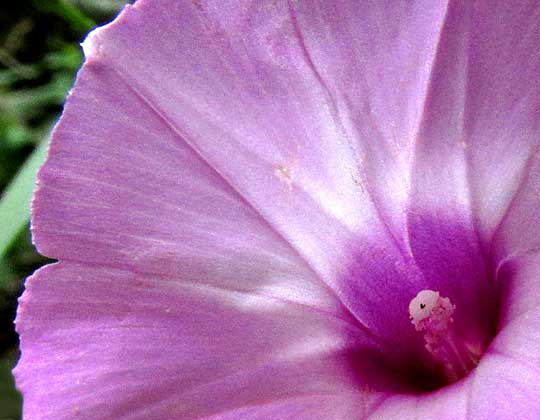
I'd read that the Tie Vine's leaves can range from deeply three-lobed to heart-shaped with no lobes, so the very different leaf shapes didn't surprise me. What did surprise, however, was the absolutely hairless calyx, shown below:
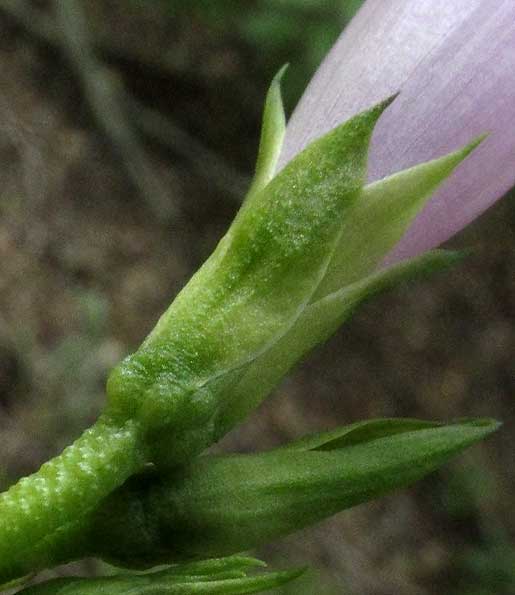
Hairiness can vary somewhat between individuals of the same species without it having any significance. But this difference between a calyx with many long hairs and a calyx that's completely hairless is extreme, as you can see if you compare the calyx of last year's morning-glory with this year's. On the Internet I looked into the matter.
Now I see that two varieties of Tie Vine formally are recognized. Last year's hairy one was the "typical" one, Ipomoea cordatotriloba var. cordatotriloba, described as occurring mainly in deciduous forest. This week's hairless one is Ipomoea cordatotriloba var. torreyana, described as found mainly in prairies and plains. The junipers in which this week's vine occurred were beside a grassy prairie patch in the upper Dry Frio Valley, in Real County, plus junipers are evergreen, not deciduous trees, so all that works out OK. I read that where the two habitat types meet, often the resulting morning-glory's appearance is intermediate that of the two varieties.
Often when a species is represented by two or more formally recognized varieties, the varieties are geographically separated. It's not unusual in such cases for intermediate forms to occur along boundary lines held in common. Here the two varieties occur in the same geographic location, but in different habitats.
Though in our area Tie Vine is fairly uncommon and offers a welcome splash of color where otherwise there's just greenness, I read that in some rainier parts of the US Deep South it can become a "rampant and aggressive grower that can be troublesome in a garden setting."